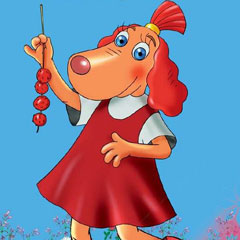In the beginning of the 21st century Estonian literature for children got into the swing again after a short (quantitative) low. Various contests, prizes and international contacts were of help, but above all it was due to the new generation of writers (Kivirähk, Keränen, Kass, Raud and others). The aesthetics, design and illustrations of the books for children have obtained more and more importance.
Continuously the artistic fairy tale dominates in contemporary literature for children. The whole fantastic plot may unroll in a wondrous fairyland (like in H. Käo’s Little Knight Rikardo), or miracles may happen and peculiar characters adventure in a realistic milieu (R. Made’s Secret-Green Grove). The ordinary world may also be depicted through the child’s eyes.
The taboo topics have almost disappeared. This century has witnessed more stories about animals, especially about dogs.
Conditionally, Lotte-series might be appreciated as a animal stories as well. Nevertheless, Lotte is special – she has become a multimedia heroine typical of the early 21st century. Lotte is encountered in books and in animation films, on the stage, and in numerous products beginning from board games, toys and clothes up to juice and ice cream. A kindergarten already bears Lotte’s name and there are plans to establish a theme park Lotte’s Land near the border of Estonia and Latvia.
Lotte is not the first, but she certainly is the most commercialised contemporary character in Estonian children literature. New products keep coming.
Text by Mari Niitra
Back to top



 ESTONIA
ESTONIA
